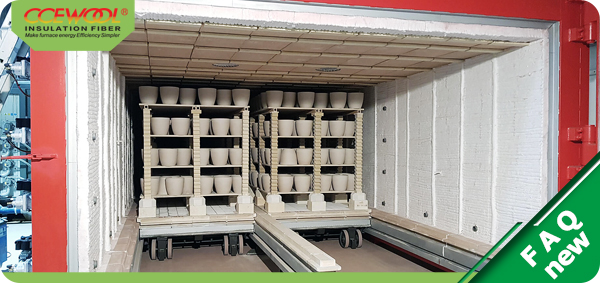As a highly efficient thermal insulation material, ceramic insulation fiber has gained widespread use across various industries due to its excellent insulating properties. Made primarily from high-purity aluminosilicate fibers, it offers exceptional thermal resistance, high-temperature durability, and chemical stability, making it the preferred material for numerous high-temperature applications.
Extremely Low Thermal Conductivity
The most notable feature of ceramic insulation fiber is its extremely low thermal conductivity. It effectively blocks heat transfer, reducing energy loss and helping equipment maintain optimal operating temperatures in high-temperature environments. Its thermal conductivity is significantly lower than traditional insulation materials like mineral wool or glass fiber, ensuring excellent insulation even at high temperatures.
Exceptional High-Temperature Performance
Ceramic insulation fiber can withstand temperatures ranging from 1000°C to 1600°C, which makes it widely applicable in high-temperature equipment and installations in industries such as steel, metallurgy, petrochemicals, and power generation. Whether used as a furnace lining material or for high-temperature pipes or kilns, ceramic fiber performs excellently in harsh environments, ensuring the stable operation of equipment.
Lightweight and Efficient
Compared to traditional insulation materials, ceramic insulation fiber is lightweight and easy to install, reducing the overall load on equipment while significantly improving installation efficiency. Its lightweight nature also offers a distinct advantage in equipment with high mobility requirements, without compromising its superior insulation performance.
Excellent Thermal Shock Resistance
Ceramic insulation fiber has outstanding thermal shock resistance, maintaining stability even in situations with rapid temperature fluctuations. It resists cracking and damage, making it especially suitable for high-temperature equipment like industrial furnaces, kilns, and combustion chambers where temperatures can change drastically.
Environmentally Friendly and Safe
Ceramic insulation fiber is not only highly efficient in terms of thermal insulation but is also non-toxic and harmless. During high-temperature use, it does not release harmful gases or produce dust that could be harmful to the environment or human health. This makes it an ideal material for green, eco-friendly industrial applications, meeting modern requirements for environmentally friendly materials.
Wide Range of Applications
With its outstanding thermal insulation properties and durability, ceramic insulation fiber is widely used across many industries, including steel, petrochemicals, power generation, glass, ceramics, and construction. Whether used as furnace lining or as insulation for high-temperature pipes and equipment, ceramic fiber effectively isolates heat, enhances equipment efficiency, and reduces energy consumption.
In conclusion, ceramic insulation fiber, with its excellent thermal insulation, high-temperature resistance, and environmentally friendly properties, has become the material of choice for modern industrial high-temperature insulation. It not only improves operational efficiency but also provides strong support for energy conservation and environmental protection.
Post time: Sep-18-2024


